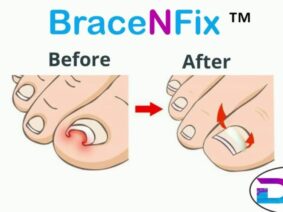Osgood-Schlatter disease is a condition which causes pain on the knee. It commonly occurs among young people between the ages of 9-16. It manifests itself through a painful lump just below the knee. This is due to the inflammation of the patellar ligament at the tibial tuberosity. The pain is usually felt during physical activity such as running, jumping, squatting and going up and down stairs.
Around 75% of cases affect boys and occurs in up to 20% of sporty children compared to 4% of a group of all activity levels. In a quarter of cases, both knees are affected and it is more likely to happen around the age of rapid growth. Since the condition is due to the irritation and damage of the growth plate, Osgood-Schlatter disease can sprout only while the growth plate is present, usually up to 16 years of age.
Mechanical factors play a big role in Osgood–Schlatter’s disease. When the feet are in ‘perfect’ alignment, the quadriceps muscles, patella tendon, patella and tibial tuberosity are all in a line. Any force created by using the thigh muscles transmits to the tuberosity in a direct front-on direction. A pronated foot will increase the quadriceps angle in a similar way that a knock kneed position would. The change in the angle of pull can leave the trochanter more vulnerable from an angled pulling force.
Ignoring symptoms or adopting a ‘no pain, no gain’ attitude is likely to cause further damage and prolonged recovery in patients with Osgood Schlatter’s disease. Immediate and appropriate treatment of patients with this condition is essential to ensure a speedy recovery.
Some of the factors which may contribute to the development of Osgood Schlatter’s disease include:
- A sudden increase in training or sporting activity
- Inappropriate training
- Recent growth spurts
- Inappropriate footwear
- Muscle tightness or weakness (particularly the quadriceps)
- Joint stiffness
- Poor lower limb biomechanics
- Poor foot posture
During treatment, the podiatrist may perform the following techniques:
- RICE — (Rest, Ice, Compression, and Elevation)
- Orthotics — the podiatrist may discuss the use of foot orthotics as part of the treatment plan. This is especially important if there are biomechanical factors that exacerbate the tension on the patella tendon. This will help support the foot and reduce the effect of biomechanical abnormalities such as an excessively pronated foot.
- Stretching — particularly on the quadriceps and hamstrings.
- Recommencement of the sport in a month or so
- Training changes — depending on your activities, the podiatrist may recommend modifications to a training regiment. Return to activity should be supervised by a qualified person such as a podiatrist or experienced adolescent coach.
The success rate of treatment is largely dependent on the patient’s compliance.






